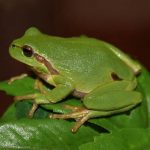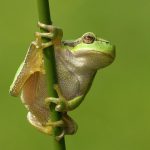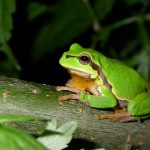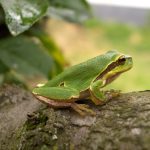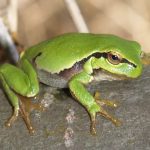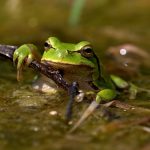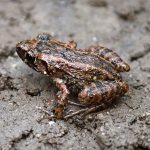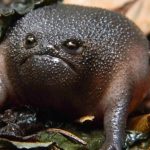European Tree Frog
European tree frog is a small species of frog found in large parts of Europe, Asia and parts of Africa. The species is widespread in Europe. The creature has a great leaping ability which helps it to catch fast-flying insects which make up bulk of its diet.
| Kingdom | Animalia |
| Phylum | Chordata |
| Class | Amphibia |
| Order | Anura |
| Family | Hylidae |
| Genus | Hyla |
| Scientific Name | Hyla arborea |
| Size | Males: 3.2–4.3 cm (1.3–1.7 in) Females: 4–5 cm (1.6–2.0 in) |
| Color | Green, gray, or tan upper surface with whitish underside; dark brown stripe on the side extending from the eyes to the groin; throats of the males are golden brown while throats of the females are white |
| Distribution | Europe, northwest Africa, Asia |
| Habitat | Marshlands, damp meadows, reed beds, gardens, parks, vineyards, orchards, stream banks, lakeshores, humid or dry forests |
| Diet | Variety of small arthropods like spiders, flies, beetles, butterflies, smooth caterpillars |
| Hibernation Fact | Undergoes hibernation in walls, cellars, under clumps of vegetation, under rocks, or buried in leaf piles or manure piles |
| Predators | Fish |
| Breeding Season | Late March to June |
| Mode of Reproduction | Oviparous (egg laying) |
| Clutch Size | Around 800 to 1000 eggs |
| Incubation Period | 10 to 14 days |
| Metamorphosis Period | Around 3 months |
| Average Lifespan | Up to 15 years |
| IUCN Conservation Status | Least Concern |
European Tree Frog Pictures Gallery
- European Green Tree Frog
- European Tree Frog Habitat
- European Tree Frog Images
- European Tree Frog Photos
- European Tree Frog Pictures
- European Tree Frog
- Hyla Arborea
- Images of European Tree Frog
